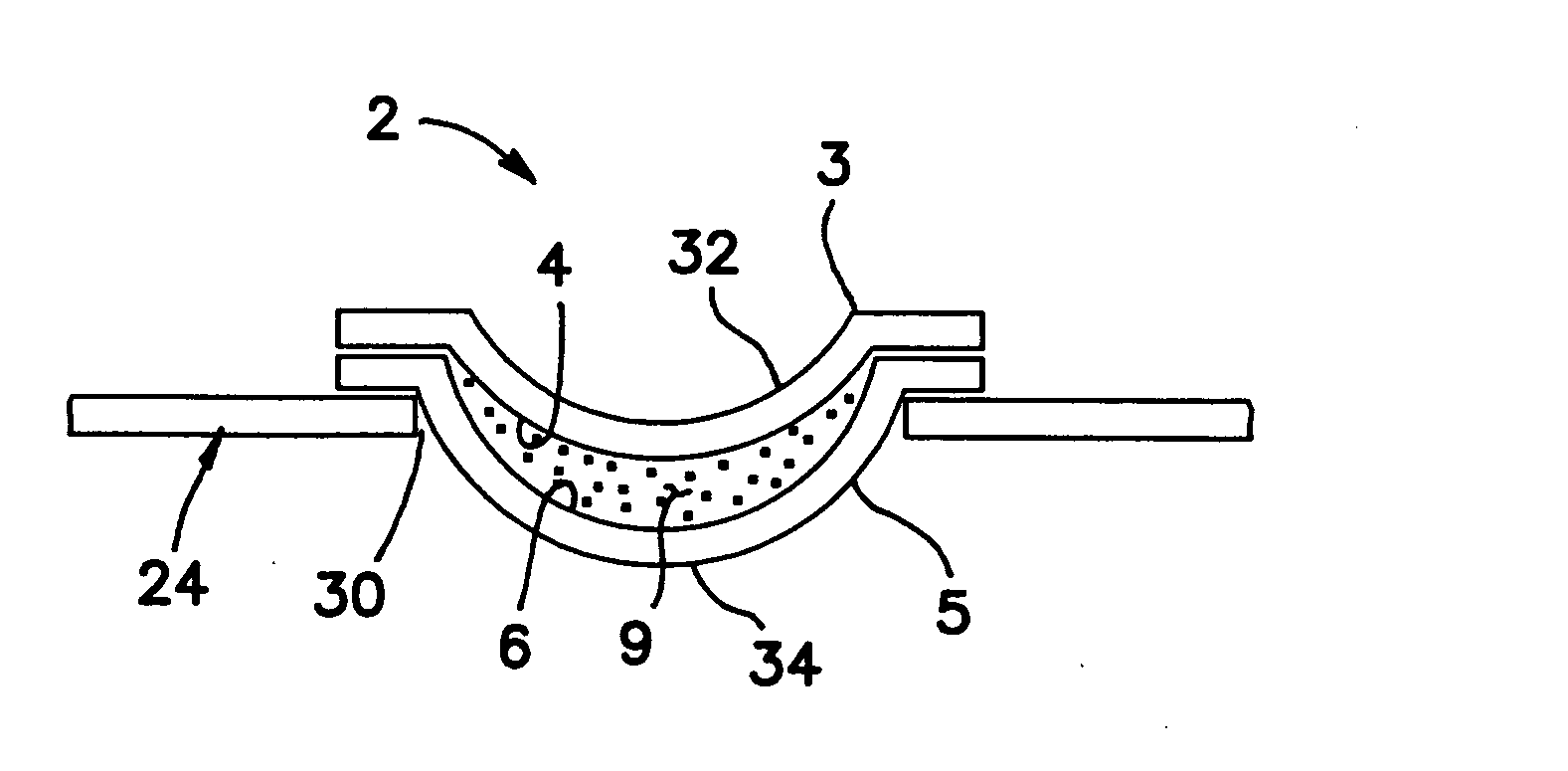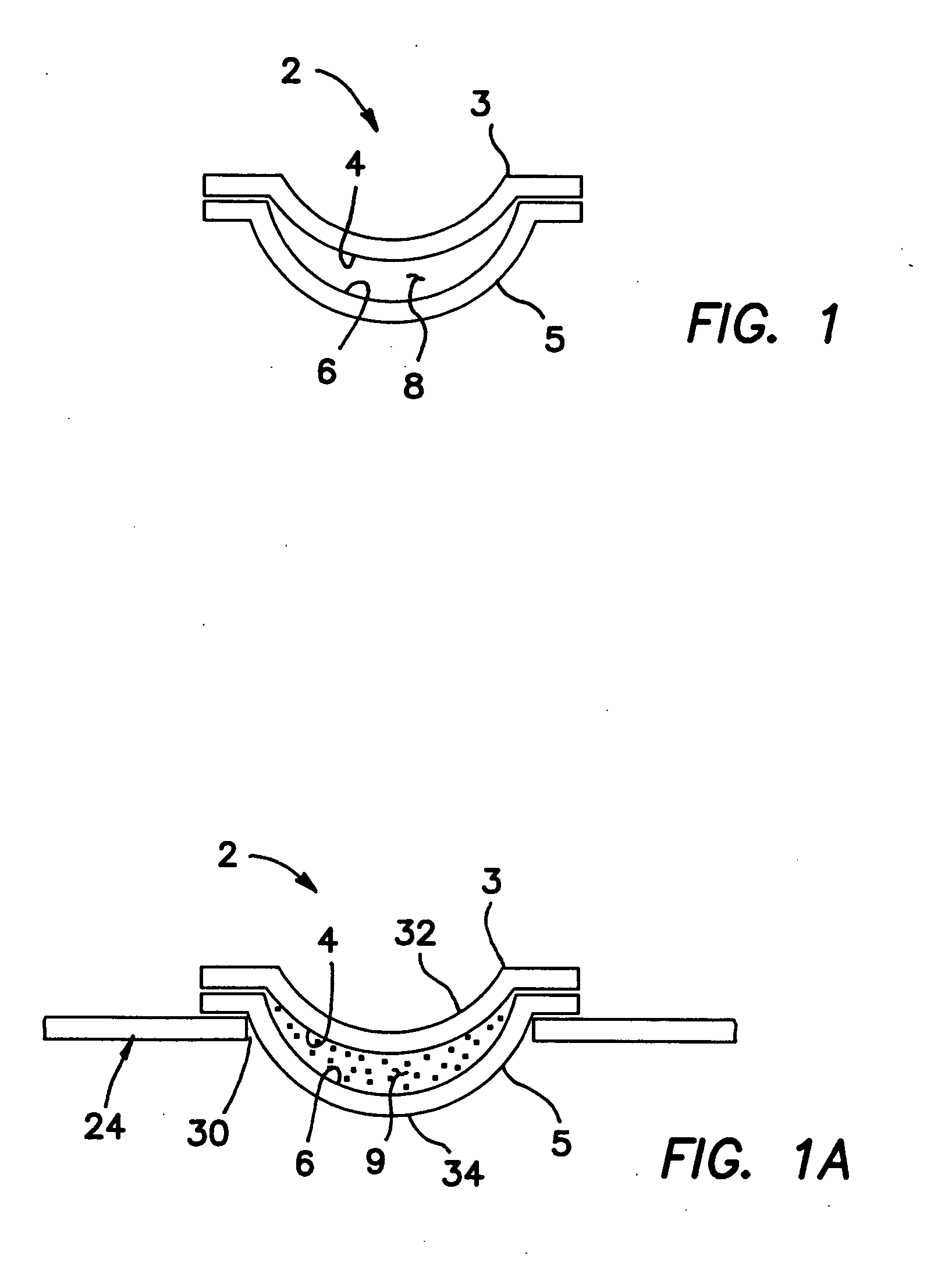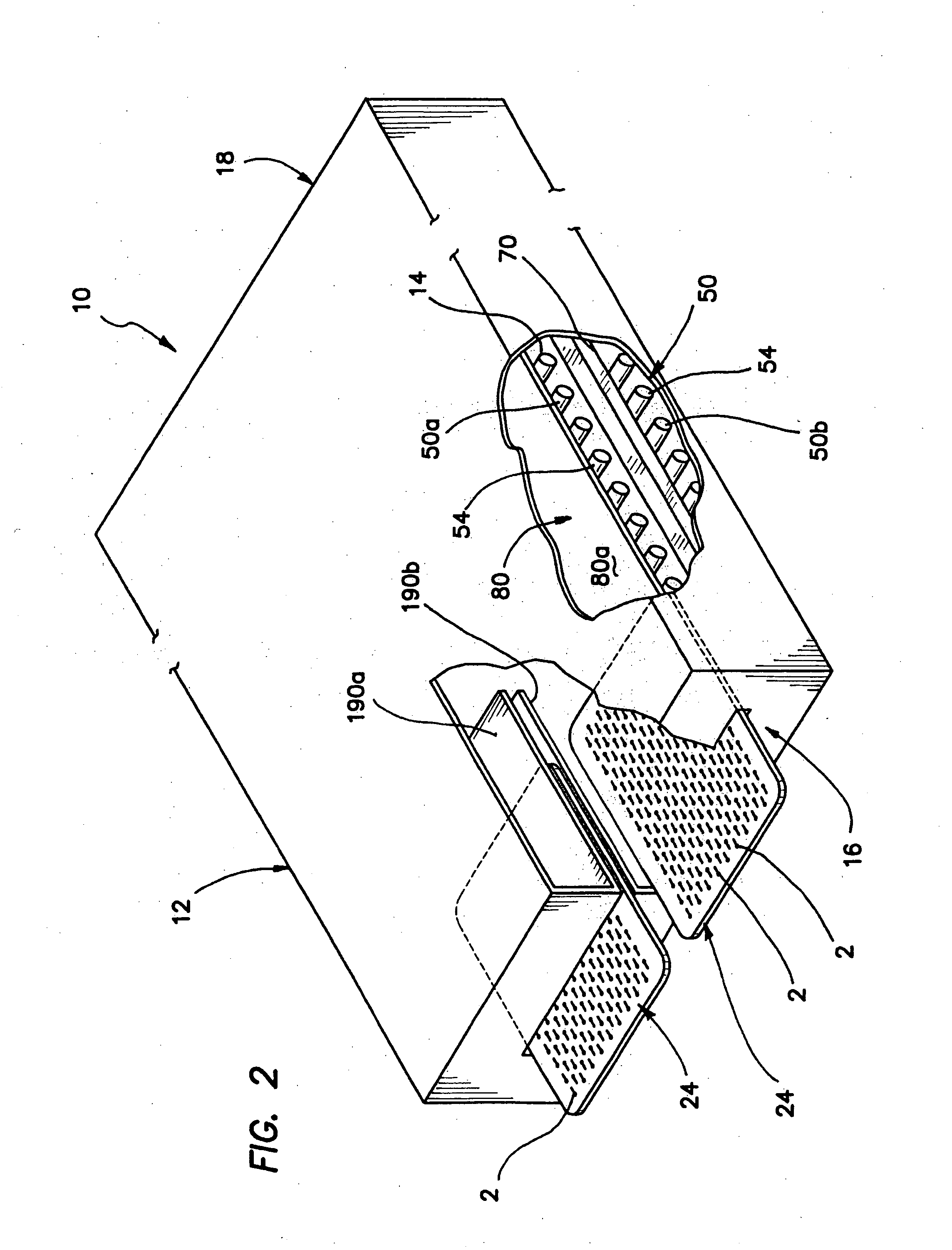Systems and methods for producing contact lenses from a polymerizable composition
a technology of polymerizable composition and production method, which is applied in the direction of dough shaping, manufacturing tools, instruments, etc., can solve the problems of difficult control of the initiation and propagation of polymerization, and the inability to completely satisfy ultraviolet-induced polymerization as a means, so as to reduce distortion, improve the edge shape of the finished lens, and minimize lens distortion
- Summary
- Abstract
- Description
- Claims
- Application Information
AI Technical Summary
Benefits of technology
Problems solved by technology
Method used
Image
Examples
Embodiment Construction
[0074] The present invention will typically be described herein with respect to methods and systems useful for the manufacture of contact lenses, though it is to be appreciated that, with appropriate modification thereto, the present methods and systems may be useful for the manufacture of other types of ophthalmic lenses and other light-polymerizable articles in general.
[0075] The following documents are incorporated by reference in their entireties: Martin et al., U.S. Pat. No. 5,597,519; Galas, U.S. Pat. No. 5,759,318; Grouev et al, U.S. Pat. No. 6,333,605; Lai, U.S. Pat. No. 6,359,024; Lai, U.S. Pat. No. 6,465,538; Iwata et al., U.S. Patent Publication No. 2002 / 0016383; Heinrich et al., U.S. Patent Publication No. 2003 / 0090014; European Patent Application No. EP 1 314 527; and European Patent Application Publication No. 0 686 484.
[0076] The term “contact lens” as used herein refers to an ophthalmic lens which, after its removal from a mold in which it is made, is of a structur...
PUM
| Property | Measurement | Unit |
|---|---|---|
| wavelengths | aaaaa | aaaaa |
| wavelengths | aaaaa | aaaaa |
| wavelength | aaaaa | aaaaa |
Abstract
Description
Claims
Application Information
 Login to View More
Login to View More - R&D
- Intellectual Property
- Life Sciences
- Materials
- Tech Scout
- Unparalleled Data Quality
- Higher Quality Content
- 60% Fewer Hallucinations
Browse by: Latest US Patents, China's latest patents, Technical Efficacy Thesaurus, Application Domain, Technology Topic, Popular Technical Reports.
© 2025 PatSnap. All rights reserved.Legal|Privacy policy|Modern Slavery Act Transparency Statement|Sitemap|About US| Contact US: help@patsnap.com



